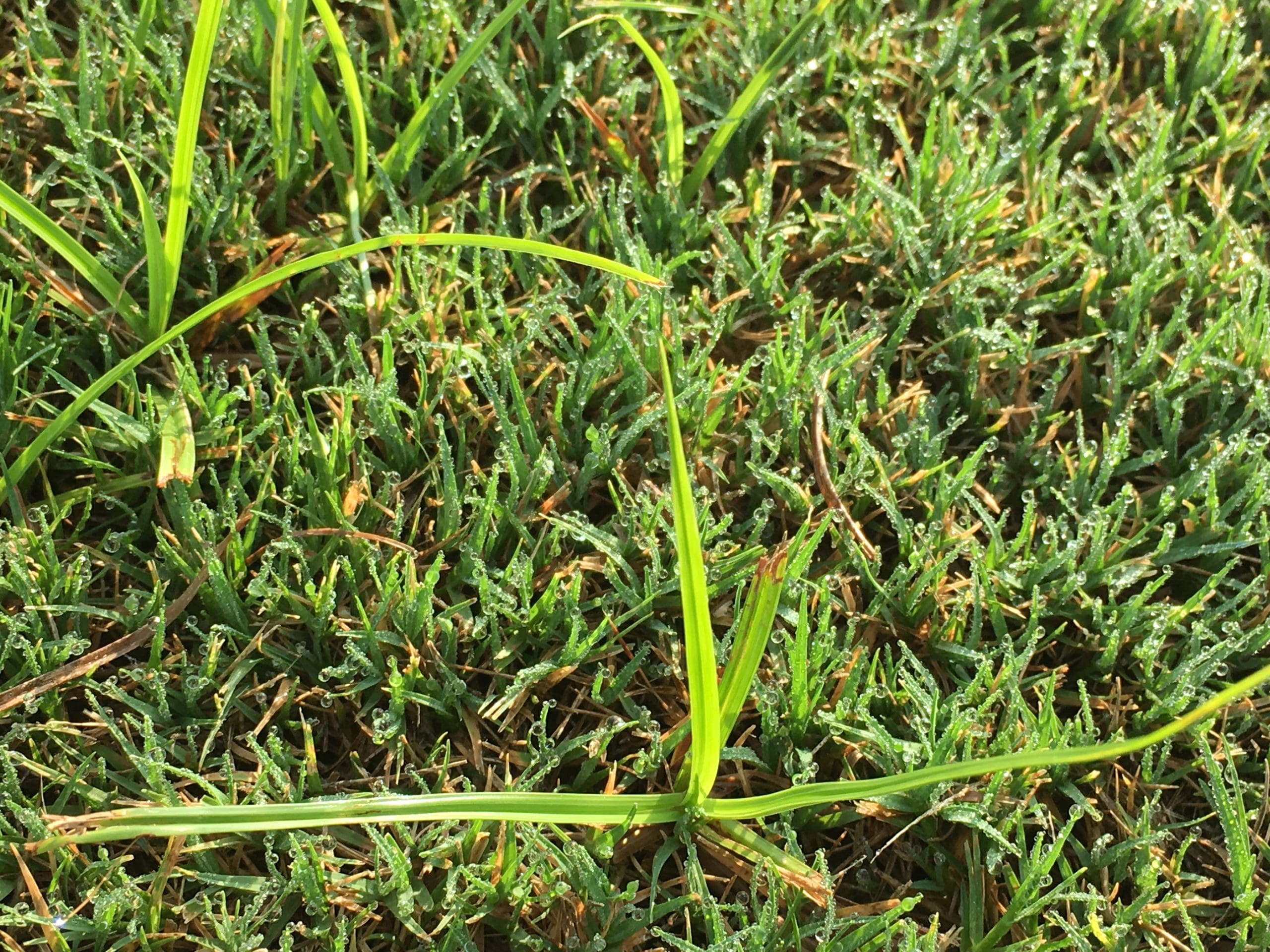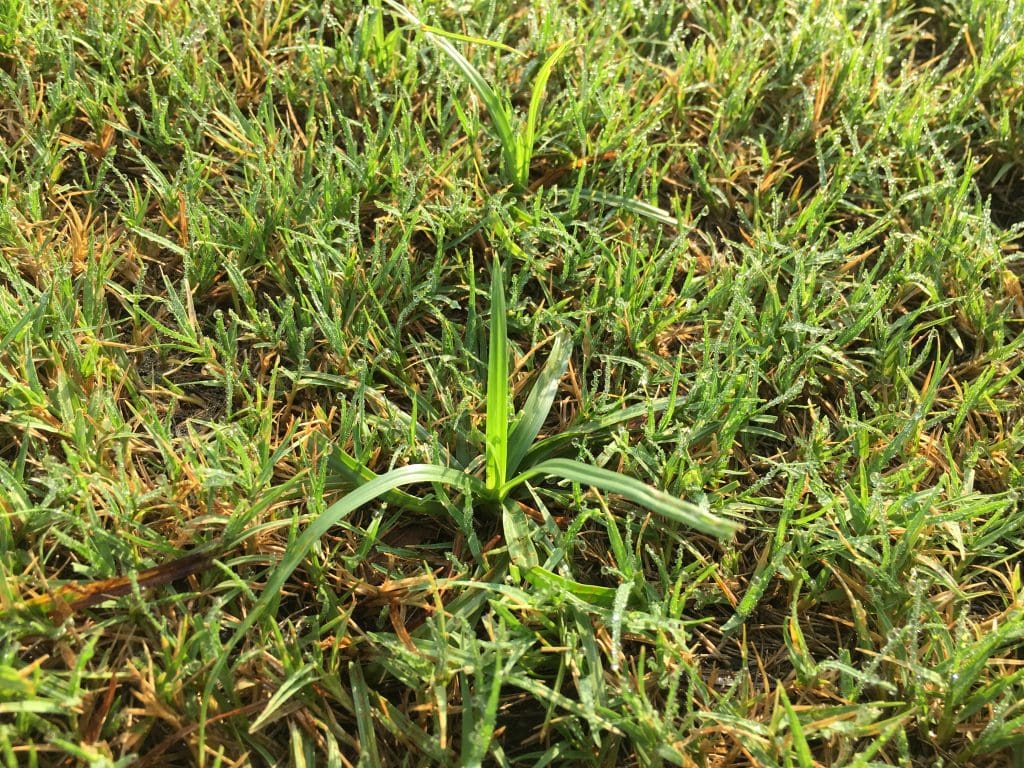
Photo: FMC Professional Solutions
Depending on your location, what summer weeds your clients see popping up will vary in the coming months.
“In general, annual grasses like crabgrass and yellow foxtail have emerged,” says Ken Hutto, Ph.D., product development manager with FMC Professional Solutions. “Yellow nutsedge and Kyllinga species are more noticeable in cool-season turfgrass markets this time of year. Summer annual broadleaf weeds like prostrate spurge and yellow woodsorrel are common species. Weeds like doveweed, Florida pusley, and ground ivy can be problematic as well.”
No matter what summer weeds are appearing in the lawns, you can be sure clients will be reaching out for you to step in.
Common Summer Weeds
Several weeds can resemble crabgrass so it’s important to identify them properly. While some postemergence herbicides are effective on crabgrass, they may not be as effective on other grass weed species.
“Crabgrass will have a tall, membranous ligule and round stem capable of rooting at the nodes,” Hutto says. “Yellow foxtail will have a short, hairy ligule with a flat stem and reddish color towards the base of the plant.”
LCOs should target younger crabgrass growth stages as this is when most postemergence herbicides are effective. Timely fertilizer applications will also aid in outcompeting newly emerged crabgrass seedlings.

Photo: FMC Professional Solutions
In the transition zone and the North, yellow nutsedge is the predominant perennial sedge while purple nutsedge can become established in warm-season lawns, commercial properties and athletic fields.
“The focus for perennial nutsedge management is minimizing new tuber production, which peaks around mid to late June and into July,” Hutto says. “Targeting postemergence sedge applications during this time disrupts tuber formation.”
Control Methods
The best offense is a good defense, and Hutto advises properly timing preemergence herbicide applications in the spring to control annual grass weeds and small-seeded broadleaf weeds.
If a client didn’t have preemergence herbicide applied in the spring, crabgrass can still be controlled using postemergence herbicides. Hutto says sequential applications may be needed depending on the crabgrass growth stage.
“Timing is also important when applying postemergence herbicides,” Hutto says. “Weeds, whether annual or perennial, are most susceptible to postemergence herbicides in the early growth stages. In general, the larger the weed gets, the more difficult to control. Proper spray coverage is important with postemergence herbicides. Nozzle size and spray volume can have an impact on achieving acceptable control of certain weeds.”
Grass and broadleaf weeds, as well as sedges, can be managed with several different herbicides, but environmental factors like air temperature and soil moisture can impact the efficacy of the herbicide in the summer.
“Under hot, dry conditions weeds are trying to conserve water, which may impact foliar herbicide uptake,” Hutto says. “These conditions may also cause stressful growing conditions for the desired turfgrass. A turfgrass under stress may become more susceptible to herbicide injury during hot, dry conditions.”
Many herbicide labels will have specific application instructions around air temperature, soil moisture and other factors that can stress turfgrass. When it comes to weed control and maintaining a desirable turf, it’s best to use a selective herbicide.
“Using non-selective herbicides to control weeds in established lawns can lead to dead patches, which disrupts turfgrass aesthetics,” Hutto says. “Additionally, creating dead patches in the lawn can encourage the emergence of new weeds.”
However, the best long-term solution for effective weed management is establishing a dense turfgrass. A dense lawn can outcompete emerging weed seedlings. Creating thick turfgrass calls for understanding the differing needs of the turfgrass species on the property.
“For example, not all turfgrass species require the same amount of nitrogen inputs,” Hutto says. “The recommended mowing height for tall fescue is different than bermudagrass. As LCOs better understand how to properly balance and time the implementation of these needs, turfgrass density will improve.”
Created in partnership with the experts at FMC True Champions.

